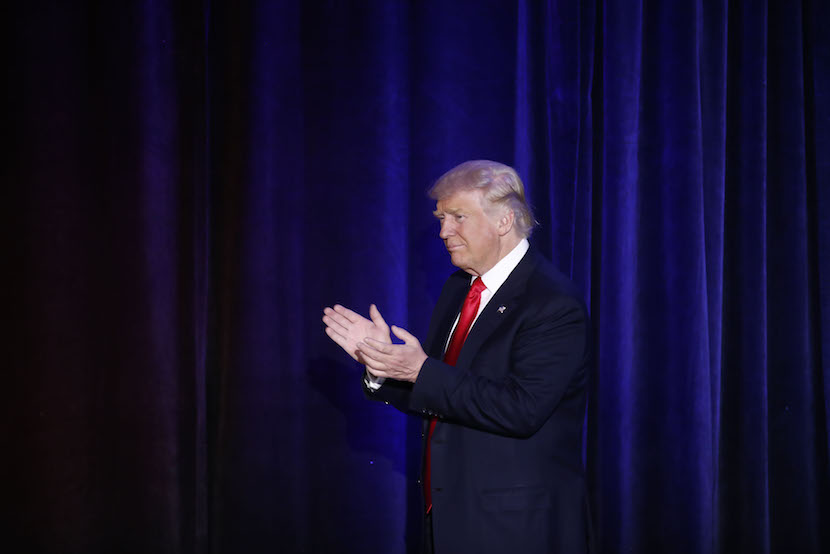It was not too long ago the world woke up to a European Union less the United Kingdom. Fast forward to yesterday and the same shock was played across mainstream media that Donald Trump and won against all the odds and Hillary Clinton, to be the next US President-elect. And while the below article points exclusively to how the polls got it so wrong, it can also be argued mainstream media followed suit for the exact same reasons. The below article published by Brandseye points to the power of social media, and how that data made both Brexit and Trump, the preferred choice. The group analysed 27 million conversations involving approximately 3 million individual authors in October and November in the lead up to the Presidential elections. Some great insight highlighting the value of understanding social media with any decision being made. – Stuart Lowman
From Brandseye.com*
How did the polls get it so wrong?
That’s the question being asked around the world as shocked commentators try to make sense of Donald Trump’s win. While, no doubt, many will talk about a divided America, the angry Midwest, and the trend against globalisation, there is one fact that is now abundantly clear. It’s an uncomfortable reality that has been known in the research industry for some time – traditional research polling has an Achilles heel; and social media holds the key to companies being able to understand the voice of the people.
The polls’ poor performance in the US elections is not an isolated event. They consistently and confidently called a Remain win in the UK’s Brexit referendum, while BrandsEye’s social media analysis warned of a majority looking to leave the EU. Whilst the world that relied on polls was surprised, BrandsEye was not.
Polling is flawed in a number of ways. To start with, few outsiders realise that many polls contain no more than a thousand participants. While statistically this should be enough to gauge a much larger population, it takes only a small number of people to introduce a significant bias. Consider also how this bias is introduced. Many polls are telephone polls, yet many Americans no longer possess landlines. The lists of participants are often dated and tend to be predominately urban. Behavioural psychologists have documented that, when asked by a stranger for an opinion, people often lie or dilute their position, uncomfortable with their own views or prejudices. Significantly, polling cannot measure anger, enthusiasm or the “volume” of commitment expressed in the answers. These emotions determine the likelihood of people acting on their views on Election Day. And most of all, polls take time to conduct, compile and re-weight, leading them to make predictions on old news. There is good reason why candidates campaign feverishly up to Election Day – the events and momentum of the last few days going into the voting booth really do matter.
Social media seems to have come of age as being increasingly representative of the electorate at large and no longer the domain of the angry and extreme. As such it has three great advantages in being used to augment and build better polling methodologies into the future.

One, the number of participants is much, much greater with millions of people voicing their views. BrandsEye, for example, tracked over 27 million conversations involving approximately 3 million individual authors during October and the first week of November.
Two, these views are unsolicited and spontaneous and represent an undiluted vote for or against a candidate.
Three, they can be captured and measured almost immediately, giving an idea of how people are feeling right now. The key is measuring them accurately, and this is the skill BrandsEye has mastered.
By using a massively scaled crowdsourcing approach, with humans verifying expressed sentiment, BrandsEye are able to look accurately at sarcasm, innuendo, implied meaning and varied language to produce a result that is now proven to be reliable, representative and trustworthy.
If Trump said the election was rigged, and then he won, does that mean he rigged it?
— Marc Watson (@Marc_IRL) November 9, 2016
In the weeks leading up to both the Brexit referendum and the US Election, that crowdsourcing approach made one thing very clear – the polls were not measuring a large swathe of the electorate who felt disenfranchised, left out and angry. Sentiment about jobs, immigration, globalisation, and the perception that the US was run by an out of touch and exclusive elite, was overwhelmingly expressed on social media.
For example, in many key US battleground states, BrandsEye was measuring 9 authors pro-Trump or anti-Hillary to one against or for her. Michigan, where almost all polls predicted a Democratic win, was trending particularly strongly in the other direction. The strength of this data was impossible to ignore, and BrandsEye called a Trump win against almost all major political commentators, just as they had with Brexit. And, as with Brexit, accurately measured social media beat traditional polling and called the correct outcome.
The world should not have been surprised, and the key players could have known far earlier how people really felt had social media been included and measured accurately.
- Brandseye aims to help clients make insightful decisions informed by accurate, meaningful social, online, print and broadcast media data.

